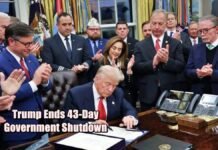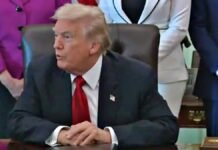
Key Points
- President Trump told Apple CEO Tim Cook he does not want Apple expanding manufacturing in India unless it is solely for the Indian market, urging a focus on US-based production instead.
- Trump’s comments come as Apple rapidly boosts iPhone assembly in India, aiming to supply most US-bound iPhones from India by 2026 to reduce reliance on China.
- Trump claimed India has offered to drop all tariffs on US goods, though no official confirmation from India has been made.
- Apple shipped $2 billion worth of iPhones from India to the US in March 2025 alone, reflecting a 60% year-on-year surge in Indian production.
- US-India trade talks are ongoing, with both sides seeking to resolve recent tariff disputes and deepen economic ties[1].
New Delhi: During a business event in Doha, US President Donald Trump revealed he had a “little problem” with Apple CEO Tim Cook regarding Apple’s growing manufacturing footprint in India. Trump said he directly told Cook, “We’re not interested in you building in India. They can take care of themselves, they are doing very well,” emphasizing that Apple should only manufacture in India to serve the Indian market, not for US-bound products.
Trump’s comments come at a pivotal moment for Apple, which has been accelerating its shift of iPhone production from China to India. The company aims to make most iPhones for the US market in India by 2026, a move driven by ongoing US-China trade tensions, high tariffs, and supply chain risks. In the fiscal year ending March 2025, Apple assembled $22 billion worth of iPhones in India-a 60% increase from the previous year-with exports to the US surging.
India’s Tariff Offer and Trade Talks
Trump also claimed that India has offered to remove all tariffs on US goods, stating, “They are willing to literally charge us no tariff.” However, there has been no official confirmation from Indian authorities about such a sweeping offer. The claim comes amid ongoing trade negotiations, with India’s trade minister expected to visit Washington for further talks this month. This follows recent tensions after the US raised duties on Indian steel and aluminum, prompting India to threaten retaliatory tariffs.
Apple’s India Strategy: Driven by Tariffs and Supply Chain Risks
Apple’s shift to India is part of a broader strategy to diversify away from China, which still accounts for around 80% of iPhones sold in the US. The move is also a response to Trump-era tariffs on Chinese goods, which have significantly raised costs for US-bound electronics. Manufacturing iPhones in India is currently 5-8% more expensive than in China, but Apple is betting on long-term benefits from supply chain diversification and incentives from India’s government.
In March 2025 alone, Apple airlifted $2 billion worth of iPhones from India to the US-about 600 tons of devices-marking a record for both Foxconn and Tata, Apple’s key Indian suppliers. The company expects to double Indian production by the end of 2025, with India set to become a central hub for Apple’s global supply chain.
Uncertainty Over Apple’s Plans Amid US Policy Shifts
Trump’s public opposition to Apple’s India expansion has cast uncertainty over the tech giant’s manufacturing roadmap. While Apple has committed to ramping up US production, it remains unclear how much this will offset its India plans, especially as the company navigates shifting tariffs and international trade agreements.
Apple’s ambitious India manufacturing strategy faces new headwinds as President Trump pushes for a renewed focus on US-based production, even as global trade dynamics and supply chain realities continue to evolve. The outcome of ongoing US-India trade talks and Apple’s next moves will be closely watched by the tech and business worlds alike.

















































